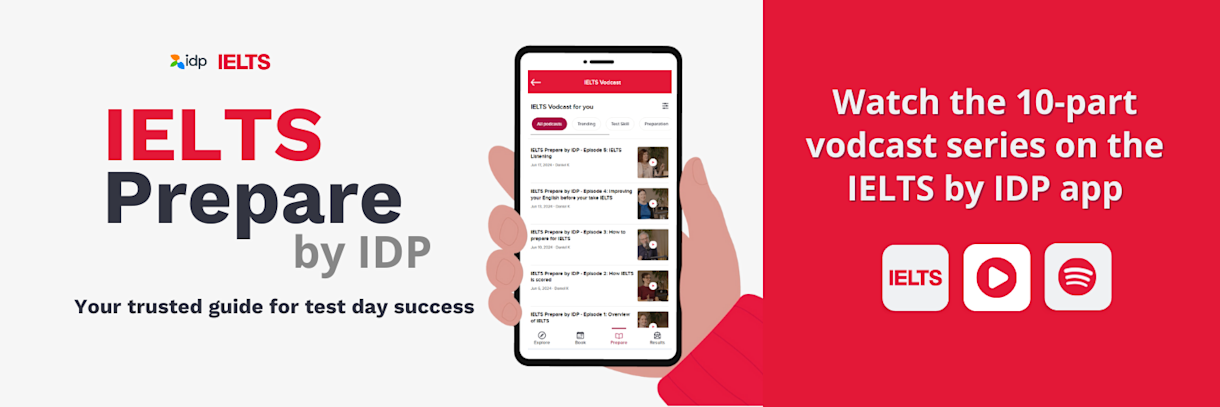One of the questions we’re often asked is how to approach question types involving maps, plans, and diagrams in the IELTS Listening test.
If you find these kinds of questions challenging, you’re not alone. This part of the test often requires you to use spatial thinking skills while you listen. You may hear language that describes where something is on a map or its position in relation to something else.

Source: IELTS Listening Free Practice Questions
In our video podcast, we ask IELTS expert Andy Watts for her top tips for questions related to labelling maps, plans and diagrams in IELTS Listening.
Andy Watts is one of the presenters in the IELTS Guided Short Course, developed by E2 Test Prep, which you can access through our IELTS by IDP app.

Download the IELTS by IDP app to access the exclusive E2 Test Prep free trial
Find out how you can perform better in map/plan/diagram tasks in our video podcast below or keep reading this blog post to discover Andy’s top three tips.
Watch the full episode here.
Tip 1: Know what you’re listening for
This question type can take the form of a plan, a map or a diagram.
Andy mentions that it’s important to look at the question carefully, so you know what to expect.
If it’s a map of a town, you’re probably going to have to label buildings. You might be asked which one is the museum, which one is the sports centre etc.
If it’s a plan of a building or site, it’s likely that you’ll have to listen for the rooms or facilities.
In a diagram label completion task, you might be asked to label parts of a machine or a piece of equipment. For example, you might hear two students discussing technical equipment they’re studying.
Tip 2: Watch out for distractors
As with other IELTS Listening tasks, you may hear distractors in the recording, that is information that sounds like it might be the correct answer but is not. It’s important to listen to everything the speaker says and not just write down the first thing or place that you hear.
An example Andy gives is a map completion task. Imagine you are looking at a hill on a map and there are two buildings at the top of the hill.
You might hear the speaker say “It’s the building at the top of the hill overlooking the harbour.”
On the map there will be two buildings on the hill, but only one overlooking the harbour. You need to make sure you choose that one.
Tip 3: Become familiar with relevant vocabulary
Andy suggests that it can also be helpful to have a range of vocabulary specifically related to this question.
For map or plan labelling questions, you’ll often hear words and expressions related to location or position.
For example:
It's on the opposite side of the street to the museum.
It’s at the end of the alleyway between Smith and Johnson Street
It’s down the end of the corridor next to the staff room.
For diagram labelling questions, you may also hear words that explain position as well as language for describing function, what things look like or the shapes of objects.
For example:
It's the S-shaped piece of metal behind the latch.
IELTS Listening map vocabulary
Review these helpful words and phrases for map, plan and diagram questions.
Function | Useful vocabulary |
|---|---|
Compass points | North, south, east, west, northwest, northeast, southeast, southwest |
Giving directions | Go straight on, turn left, turn right, go past (landmark/building), take (street name), take the (first/second/third street) on the right/left. It’s on the left/right. If you pass the (building/landmark), you went too far. |
Describing location or position | In front of, opposite, adjacent to between, across from, near, next to, beside, at the corner, facing, behind, at the top, at the bottom, in the middle, below, above, underneath, on the left/right side, in the centre, inside/outside, next to, attached to, on the edge |
Describing shapes | Square, circle/circular, triangle/triangular, rectangle/rectangular, oval, hexagon/hexagonal, diamond |
Describing parts of something | This bit/piece/segment... The part that... A section of... |
Now you try
Ready to put Andy’s tips into practice? Try a sample IELTS listening plan labelling question here.
You can listen to the audio here. When you’ve finished, check your answers on the last page of the practice question.

For more IELTS preparation tips, tune in to IELTS Prepare by IDP - your trusted guide to test day success.
Our 10-part video podcast features preparation advice from a wide range of IELTS experts and covers everything from the IELTS test structure to what to expect on test day.
Watch or listen now on the IELTS by IDP app, YouTube, Spotify or Apple Podcasts.
Ready to book your IELTS test?
Achieve your visa, work, and study goals with IELTS. Find your closest test centre and book your test now.
